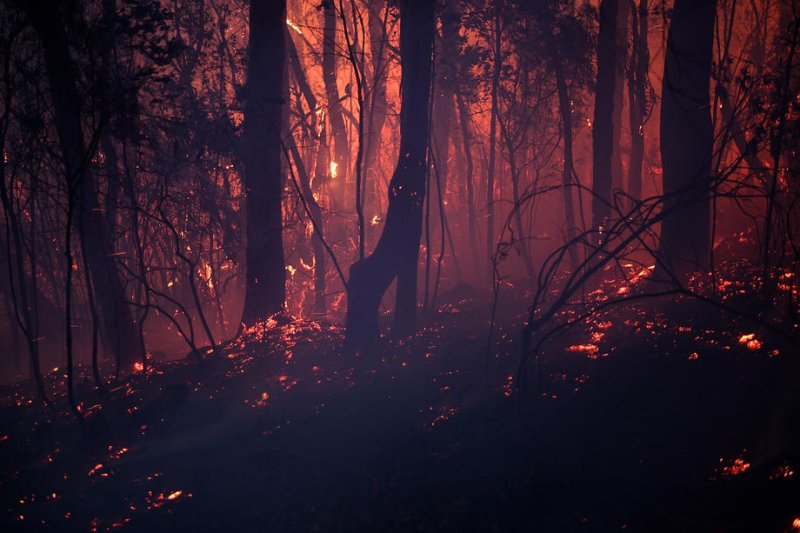A bushfire burns close to homes on Railway Parade in Woodford, New South Wales, Australia, on November 8, 2019. Photo by Dan Himbrechts/Australia and New Zealand Out/EPA-EFE
June 2 (UPI) -- The world lost tree cover the size of a soccer field every six seconds in 2019, totaling nearly 30 million acres, with a third of that loss coming from the mature rainforest, a new study released Tuesday said.
The mature rainforest is needed for biodiversity and carbon storage, the Global Forest Watch said. Last year's forest loss was 2.8 percent higher than in 2018, the study said.
"At least 1.8 gigatons of carbon dioxide emissions are associated with 2019 primary forest loss, equivalent to the annual emissions of 400 million cars," Global Forest Watch said in a statement. "Though the rate of primary forest loss was lower in 2019 than record years of 2016 and 2017, it was still the third-highest since the turn of the century."
The study said Brazil accounted for more than one-third of the humid tropical primary forest loss globally. It said the loss in 2019 was the third highest in the past 13 years.
"Naturally occurring fires in the Brazilian Amazon and other tropical rainforests are very rare," the report said. "Often, fires signal previous deforestation. Farmers and ranchers commonly set fire to recently deforested land to clear branches and stumps. Fire also plays a role in agricultural cycles, so land that had been cleared of forest in years past may be burned again to prepare for re-planting or to clear weeds from pastures."
The devastating Australian wildfires in 2019 led to a sixfold jump in tree cover loss there from 2018. Rod Taylor, of the World Resource Institute, said since those fires extended into 2020, the study only gives a partial view of the damage those fires caused.
"Whereas a normal fire might char the bark of a tree, this year's fires turned many trees into charcoal sticks," Taylor said. "Australia can expect more extreme fire seasons as fire risk increases due to climate change."















